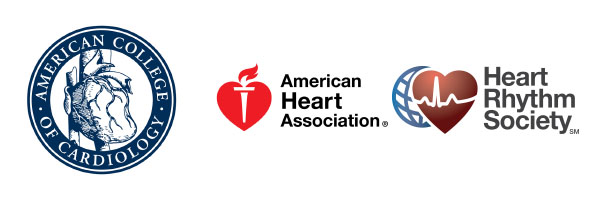
The American College of Cardiology (ACC), the American Heart Association (AHA) and the Heart Rhythm Society (HRS) have recently released the first US guideline on the evaluation and management of patients with syncope.
The 2017 ACC/AHA/HRS Guideline for the Evaluation and Management of Syncope has been published online in the journals Circulation and HeartRhythm.
Cardiac Rhythm News speaks to Win-Kuang Shen (Mayo Clinic College of Medicine, Phoenix, USA), chair of the guideline writing committee, about key details of this guideline, which is aimed to:
- Define syncope as a symptom, with different causes, in different populations and circumstances.
- Provide guidance and recommendations on the evaluation and management of patients with suspected syncope in the context of different clinical settings, specific causes, or selected circumstances.
- Identify key areas in which knowledge is lacking, to foster future collaborative research opportunities and efforts.
Why was it relevant to develop a guideline on the evaluation and management of patients with syncope?
Syncope occurs in thousands of patients every day. One third to half of the US population have had syncope at some point in their lifetime. Additionally, syncope is a symptom that can be associated with many different conditions, some of them benign; however, it is critically important to exclude any serious causes.
Because syncope is very common and can affect many patients, this guideline will provide guidance to healthcare providers to conduct efficient and effective evaluation and management for this large patient population.
Given the importance of syncope, could you explain why a guideline in this area has not been developed earlier in the USA?
The European Society of Cardiology (ESC) released syncope guidelines in 2001, 2004 and 2009.
I am not sure “why” we have not developed a guideline earlier. I think it is because syncope is a symptom, not a specific disease/condition. As such, there have been general reviews on the topic from the American College of Physicians and other general and speciality societies; there have been scientific statements on syncope related to sudden cardiac death, but not a comprehensive guideline on syncope.
This is the first ACC/AHA/HRS formal guideline on syncope.
What specialities were involved writing this guideline?
The writing committee included representatives from the ACC, AHA, HRS, American Academy of Neurology, American College of Emergency Physicians, and Society for Academic Emergency Medicine, including cardiologists, electrophysiologists, a neurologist, an emergency physician, and a paediatric cardiologist.
What are the key recommendations from the document?
Amongst the most relevant recommendations the guideline addresses:
- A detailed history and physical examination should be performed in patients with syncope (class I).
- In the initial evaluation of patients with syncope, a resting 12-lead electrocardiogram (ECG) is useful (class I).
- Hospital evaluation and treatment is recommended for patients presenting with syncope who have a serious medical condition potentially relevant to the cause of syncope identified during initial evaluation (class I).
- Routine and comprehensive laboratory testing is not useful in the evaluation of patients with syncope (class III: no benefit). Routine cardiac imaging is not useful in the evaluation of patients with syncope unless cardiac aetiology is suspected based on an initial evaluation including history, physical examination, or ECG (class III: no benefit). Routine neurological imaging and electroencephography are not recommended in the routine evaluation of patients with syncope in the absence of focal neurologic findings (class III: no benefit).
- Vasovagal syncope is the most common cause of syncope. Effectiveness of drug therapy is modest. Patient education is recommended on the diagnosis and prognosis (class I).
- Betablocker therapy, in the absence of contraindications, is indicated as a first-line therapy in patients with long QT syndrome (LQTS) and suspected arrhythmic syncope (class I). Implantable cardioverter defibrillator (ICD) implantation is reasonable in patients with LQTS and suspected arrhythmic syncope on betablocker therapy or intolerant to betablocker therapy (class IIa).
- Dual-chamber pacing might be reasonable in a select population of patients over 40 years of age with recurrent vasovagal syncope and prolonged spontaneous pauses (class IIb). Betablockers are not beneficial in paediatric patients with vasovagal syncope (class III: no benefit).
- Electrophysiologic study is reasonable in patients with moderate or severe atherosclerotic coronary heart disease and unexplained syncope (class IIa).
- Cardiovascular assessment by a care provider experienced in treating athletes with syncope is recommended prior to resuming competitive sports (class I). Participation in competitive sports is not recommended for athletes with syncope and phenotype-positive hypertrophic cardiomyopathy, CPVT, LQTS1, or arrhythmogenic right ventricular cardiomyopathy before evaluation by a specialist (class III: harm).
- Referral for autonomic evaluation can be useful in selected patients with syncope and known or suspected neurodegenerative disease (class IIa); referral to a specialist with expertise in adult congenital heart disease can be beneficial in selected patients with this disease and syncope (IIa). For the assessment and management of older adults with syncope, a comprehensive approach in collaboration with an expert in geriatric care can be beneficial (IIa).
According to the guideline, what knowledge gaps are present in the evaluation and management of patients presenting with syncope?
The section 12 of the syncope guideline contains a descriptive evaluation of several areas which require investigation.
Just to highlight a few, now we have provided a definition of syncope and other associated conditions, and we can better determine the types and epidemiology of syncope in different populations. We will need focused data on risk stratification and clinical outcomes divided according to the underlying disease. New monitoring technology is rapidly evolving. The role of these devices needs to be determined by randomised clinical trials.
Furthermore, there are uncommon conditions associated with syncope with increased risk of sudden death. We need to identify how to best evaluate these patients.
Finally, we need further investigation in specific populations—the young, the older, athletes, etc—in order to improve efficiency and effectiveness of evaluation and treatment.









